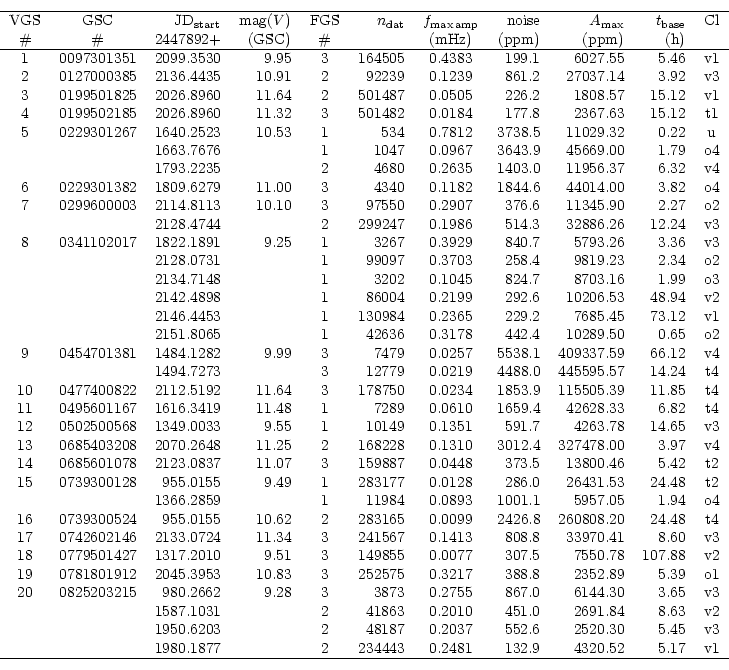The period search was carried out with a standard Fourier technique (Deeming et al. 1975). All FGS data sets were reduced and analyzed as described in Kuschnig et al. (1997), where a significance criterion for variability, based on extensive numerical simulations, is defined. A probability of 99.9% for an intrinsic variability was found for synthetic data sets simulating real FGS data, if the corresponding amplitude in the frequency spectrum was higher than four times the noise level, which is basically determined by the mean amplitude of the whole frequency spectrum (0 to Nyquist limit). For purely white noise data, such a S/N ratio was found in only 0.1% of the simulations.
We established the following data set classes, based on the signal-to-noise ratio (S/N) as the principal criterion:
For each of the above classes, four categories reflecting the noise level were defined:
| Category 1: | < | 250 ppm | |
| Category 2: | 250 | - | 500 ppm |
| Category 3: | 500 | - | 1000 ppm |
| Category 4: | > | 1000 ppm. |
Following the above classification scheme, a variable data set (v) with a noise level of 450 ppm (category 2), will be classified as v2.
With 4566 photometric data sets obtained by the three FGS instruments between August 1992 and December 1995, cross references with the HIPPARCOS and TYCHO catalog and the SIMBAD data base were performed to extract relevant information for the respective guide stars, yielding additional information for 1060 data sets.
Of these, 59 sets are classified as variable (v), 112 show a trend (t), 39 are suspected to be variable (s), 161 show orbital modulation (o), and for 102 data sets the time base is too small (< 20min), so that they were excluded from further analysis (u). The remaining 587 data sets show no significant variability and are classified as constant (c).
Spectral types for 292 guide stars in our sample have been published, and for only 10% of these a luminosity class was available. For less than 5% of this sample of guide stars the SIMBAD database provided references to the literature, frequently with contradicting evidence. Hence, for an individual star even the spectral information may be incorrect. Our sample still is too small to draw definitive conclusions; however, it is worth mentioning that at noise levels below 100ppm all stars show variability, almost independent of spectral type. Furthermore, the highest percentage of variability is found for G and K type stars.

|

|
For the 20 most interesting variables presented here, at least one data set was found to be variable with high confidence and, in addition, spectral type or B-V are available. This information is summarized in Tables 1, 2 and 3. Note that it was not possible to perform a simultaneous (multi-component) sine fit for all guide stars (see Sect. 5).
Copyright The European Southern Observatory (ESO)